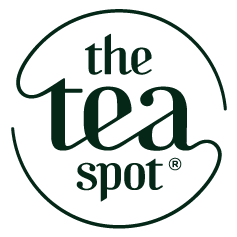By Aleksandra Crapanzano for Wall Street Journal

Venerable brands and upstarts alike are encouraging us to steep and sip our way to vitality, better sleep, even happiness. These delicious brews are the ones worth choosing.
Tea has long been considered something of a cure-all. Pick up most any classic British novel, for instance, and you can’t help but notice how many characters count on a cup to allay anything from a broken heart to a serious bout of illness.
Though many of the therapeutic benefits attributed to tea have yet to be substantiated by science, both green and black teas do contain significant levels of antioxidants. And while researchers continue to evaluate the capacity of the amino acid l-theanine, also found in tea leaves, to promote feelings of calm by elevating levels of serotonin and dopamine, my faith in the ritual of brewing, pouring and drinking tea to both soothe and refresh me is such that I tend to do it throughout the day—and now more than ever.
Even when I travel, I carry pouches of Harney & Sons’ Queen Catherine, a blend of three Chinese black teas. It’s bold enough for breakfast, even with milk and honey, and nuanced enough for afternoon, taken straight. Later, if my energy flags I’ll pour a cup of Kusmi BB Detox: Its blend of caffeine-rich yerba mate, guarana and green tea sets me back in motion, while the invigorating grapefruit note fools me into thinking the day is beginning, not drawing to a close.
With origins in China dating back as far as 2700 B.C., tea was primarily a medicine for millennia. Today it’s the second most consumed beverage in the world, after water. In recent years, what I call teas with benefits—said to combat coughs and chills, boost the immune system, put insomnia to rest or even promote a sense of joy —have flooded the high-end market.
Many products in this category are not tea per se: Technically, tea comes from the evergreen plant Camellia sinensis. Oxidation transforms the flavor and color of the leaves to produce black tea, whereas green tea leaves remain relatively unprocessed. A drink produced by steeping herbs or flowers in boiling water should, strictly speaking, be called an infusion or tisane. But most of us still call these teas.
According to Joshua Kaiser, founder of Milwaukee-based Rishi Tea, “People are seeking out tea right now to boost and bolster their immunity and overall vitality.” Mr. Kaiser discussed the popularity of “adaptogens”—plants used to aid the body in responding to stress —as well as antioxidant-rich infusions during times of illness and anxiety. “Herbal teas are not the cure, but ingredients like licorice, citrus peel, artemisia, ginger, turmeric and eucalyptus are quite beneficial,” he said. Mr. Kaiser explained that artemisia has been employed for centuries in China as an antiviral and anti-malarial, and that schisandra berry is used as a natural antidepressant.
Michael Harney, vice president of Harney & Sons, based in New York’s Hudson Valley, is seeing a similar upswell in interest around the functional aspects of tea. He and his brother, Paul Harney, spend months every year traveling the world in search of plants brewed for their physical benefits as well as the pleasure of drinking them. Harney & Sons sells a tea made from the leaves of guayusa, a plant from the Amazon traditionally used in Ecuador to make a highly stimulating brew. The Harneys also combine Guayusa with yerba mate in their AllNighter blend, laced with a delicious hint of licorice.
Harney & Sons recently launched two teas made from yaupon, a droughttolerant holly that grows wild in Texas, first used by Native Americans to brew an invigorating beverage. Like guayusa, yaupon contains caffeine, but devotees claim that drinking infusions made from these plants don’t bring on the jittery feeling often associated with coffee. I’ve found that both the Yaupon Green (roasty, vegetal) and the Yaupon Black (sweeter, smoky) help keep me alert and focused during the current, seemingly endless round of Zoom meetings.
It’s hardly surprising that teas that come with claims to promote health and resilience would strike a chord right now. From Palais des Thés, founded in Paris in 1987, Scandinavian Detox for Natural Defenses is a blend of sea buckthorn, cranberry, elderflower, blueberry and birch rich in flavonoids and other immune-boosting antioxidants. For fans of tart, vitamin C-rich hibiscus, No. 100 Corazon de Cien Fuegos, from Bellocq Tea in Brooklyn, blends the blossom with rose petals, lavender and cinnamon to create one of the loveliest tisanes I’ve tasted. Flu Fighter, from The Tea Spot in Boulder, Colo., features red root, traditionally used to treat fevers, as well as honeysuckle, said to alleviate respiratory infections, and astragalus, a flowering plant that has been used for centuries in Chinese medicine to stimulate the immune system.
The French have a long tradition of drinking a digestive tisane after dinner; more often than not, this ritual has been as simple as steeping a few fresh leaves of verbena or mint in a pot of boiling water. Now, the venerable French tea company Mariage Frères is touting the benefits of its green tea Gabacha, rich in gamma aminobutyric acid (aka GABA), an amino said to promote relaxation without fatigue. In the cup it delivers subtle notes of candied rose. Dream Tea, another recent addition to the Mariage Frères line, combines eight plants including lemon balm, lemongrass and sweet mint. Nuanced and balanced, it is designed for bedtime but doesn’t knock one out.
For that I turn to valerian root. Night Time, from Pukka Herbs, based in Bristol, U.K., combines oat, chamomile, lavender and lime flowers with a dose of soporific valerian as well as tulsi leaf, used in ayurvedic medicine as a calming tonic. Those claims aside, I can confidently report that its lovely floral sweetness soothes me every time.
